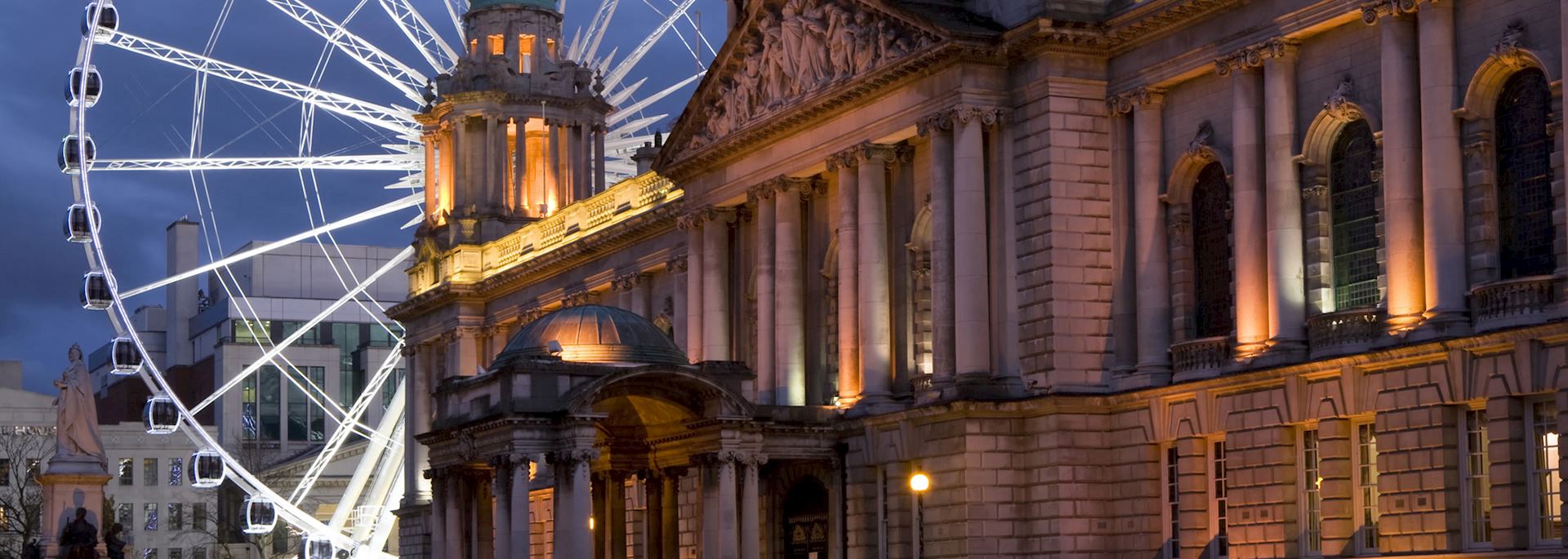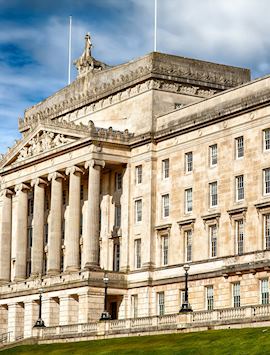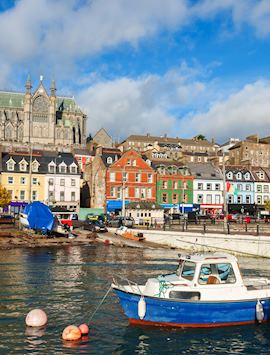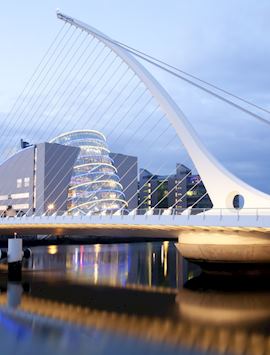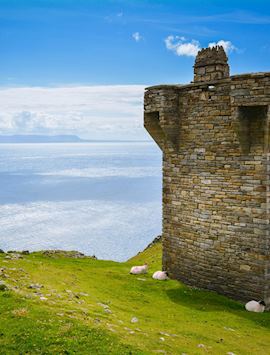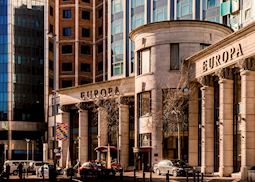Jump to:
Transformed from its days as one of Europe's most troubled cities, Belfast is flourishing again. Peace has brought prosperity and with it a palpable energy. The city's elegant Victorian buildings have been restored, designer shops line the streets and lively galleries serve as the public face of a thriving arts scene.
As if eager to make up for lost time, the city is developing at a heady pace with a rejuvenated waterfront and glittering new attractions such as Titanic Belfast. Music spills out the doors of wonderfully traditional pubs, a host of sleek restaurants vie for awards, and the beautiful Antrim coast is an easy drive away.
UK & Ireland specialist MaxIt’s worth taking time to absorb Belfast’s history: see the impactful murals and the Peace Wall. And then see the city as it is now: industrial but with a flourishing culinary scene and great pubs, especially in the Hill Street district.
Things to see and do in Belfast
Birthplace of the Titanic
Belfast has a long history of shipbuilding, but the establishment of Harland and Wolff in 1861 took the industry to a new level. A contract with White Star Line to build its entire fleet of ocean liners, including RMS Titanic, saw thousands employed on the design and engineering of these ships as well as their ornate fixtures and fittings.
The story of the ill-fated liner is retold at Titanic Belfast, where full-scale reconstructions and innovative interactive displays allow you to explore the shipyard, walk along the ship's decks and see the shipwreck on the sea bed.
Although the two massive Harland and Wolff gantry cranes, Samson and Goliath, still dominate the Belfast docklands, shipbuilding has all but ceased here.
Black cab tour into Belfast's political past
The eruption of sectarian violence in Ireland stems right back to the 17th century, when the British Crown confiscated the lands of Irish Catholics and granted them to English and Scottish Protestant settlers. Ireland was eventually partitioned in 1921, when six predominantly Protestant Ulster counties became Northern Ireland. It was an uneasy peace and in the late 1960s sectarian violence hit the streets of Belfast once again in an era known as 'the Troubles', which continued until the Good Friday Agreement eventually brought a fragile peace in 1998.
Today, the city is quite safe to visit, but remnants of community divisions remain such as the angry political murals in West Belfast and the intimidating ‘peace walls’ that still divide particularly militant areas. A fascinating way to get a sense of the city's history is to take a tour of the murals in a black cab with a local driver-guide, who’ll give you the inside story on life in the city during these difficult times.
Belfast's Industrial Revolution legacy
Belfast was historically an important hub in the linen and cotton industry, but it was the success of its shipyards that brought immense change to the city. In the 18th century there was huge expansion in the shipbuilding industry, and the city's population swelled enormously. By the early 19th century a larger outlet to the sea was constructed, allowing bigger vessels to access the city and, crucially, to be launched here.
Commercial and industrial expansion continued and Belfast established itself as an industrial hub of international importance. The whole city flourished and grand civic buildings, warehouses and homes went up along with a host of magnificent Victorian pubs, some of which still survive. Seek out the Crown Liquor Saloon on Great Victoria Street to step back in time among ornate Italian tiling, carved woodwork, stained glass and gas lighting.
who's been there
-
617-223-4521617-223-4757
- Make an inquiry
Suggested itineraries featuring Belfast
Our itineraries will give you suggestions for what is possible when you travel in Belfast, and they showcase routes we know work particularly well. Treat them as inspiration, because your trip will be created uniquely by one of our specialists.
Places near Belfast
- Northern Ireland 37 miles away
- Giant’s Causeway 50 miles away
- Derry/Londonderry 62 miles away
- Newgrange and the Boyne Valley 67 miles away
- Enniskillen 71 miles away
- County Donegal 88 miles away
- Dublin 88 miles away
- Sligo 105 miles away
- Kilkenny 145 miles away
- Galway 157 miles away
- County Wexford 158 miles away
- The Burren 167 miles away
- Waterford 169 miles away
- Limerick 174 miles away
- Connemara 177 miles away
- Inis Mór 184 miles away
- Cobh 214 miles away
- Cork 215 miles away
- Kinsale 228 miles away
- Killarney 230 miles away
- Kenmare 242 miles away
- Dingle Peninsula 247 miles away
Photos of Belfast
Accommodation choices for Belfast
We've selected a range of accommodation options for when you visit Belfast. Our choices usually come recommended for their character, facilities and service or location. Our specialists always aim to suggest properties that match your preferences.
-
![Culloden Estate & Spa, Belfast]()
Culloden Estate & Spa
Belfast -
![Europa Belfast, Belfast]()
Europa Hotel
Belfast -
![The Fitzwilliam Hotel, Dublin]()
The Fitzwilliam
Belfast -
![Ten Square Hotel, Belfast]()
Ten Square Hotel
Belfast -
![The Merchant Hotel, Belfast]()
The Merchant Hotel
Belfast
Ideas for experiencing Belfast
Our specialists seek out authentic ways to get to know the places that could feature in your trip. These activities reflect some of the experiences they've most enjoyed while visiting Belfast, and which use the best local guides.
-
Black cab political tour ![Black cab political tour, Belfast]()
Black cab political tour
Black cab political tour
Explore Belfast's troubled past, political murals and divided communities in the company of a local expert on this black cab tour around the city's most interesting and contentious spots, learning about the political and human cost of the Troubles as you go.
View details
